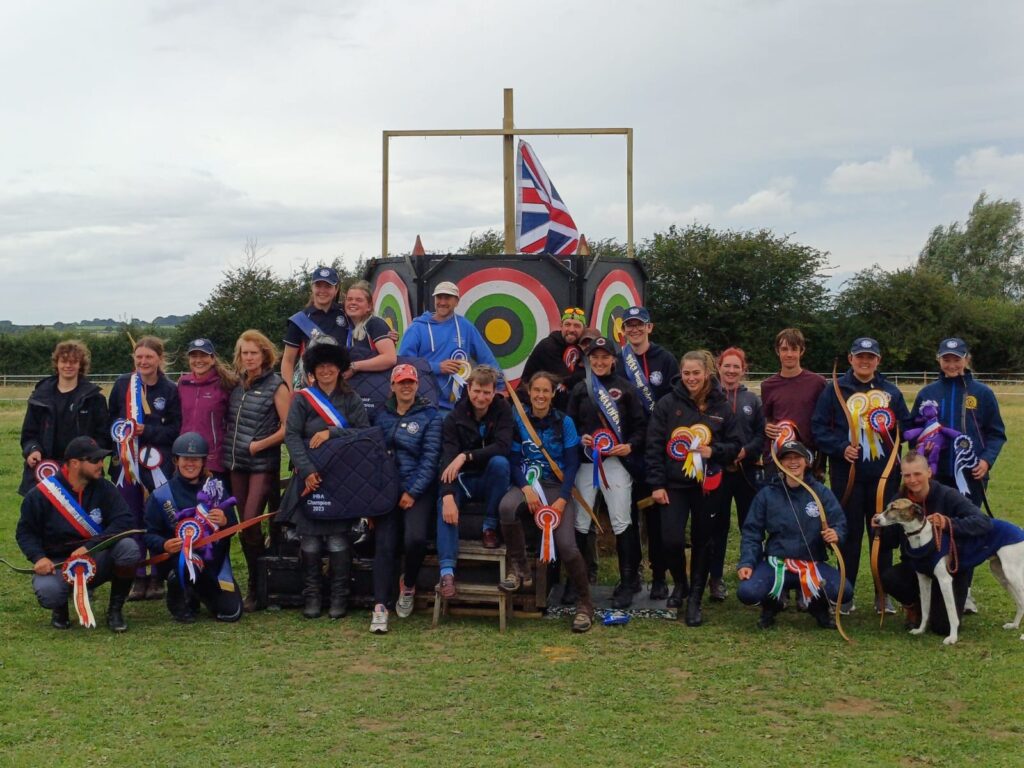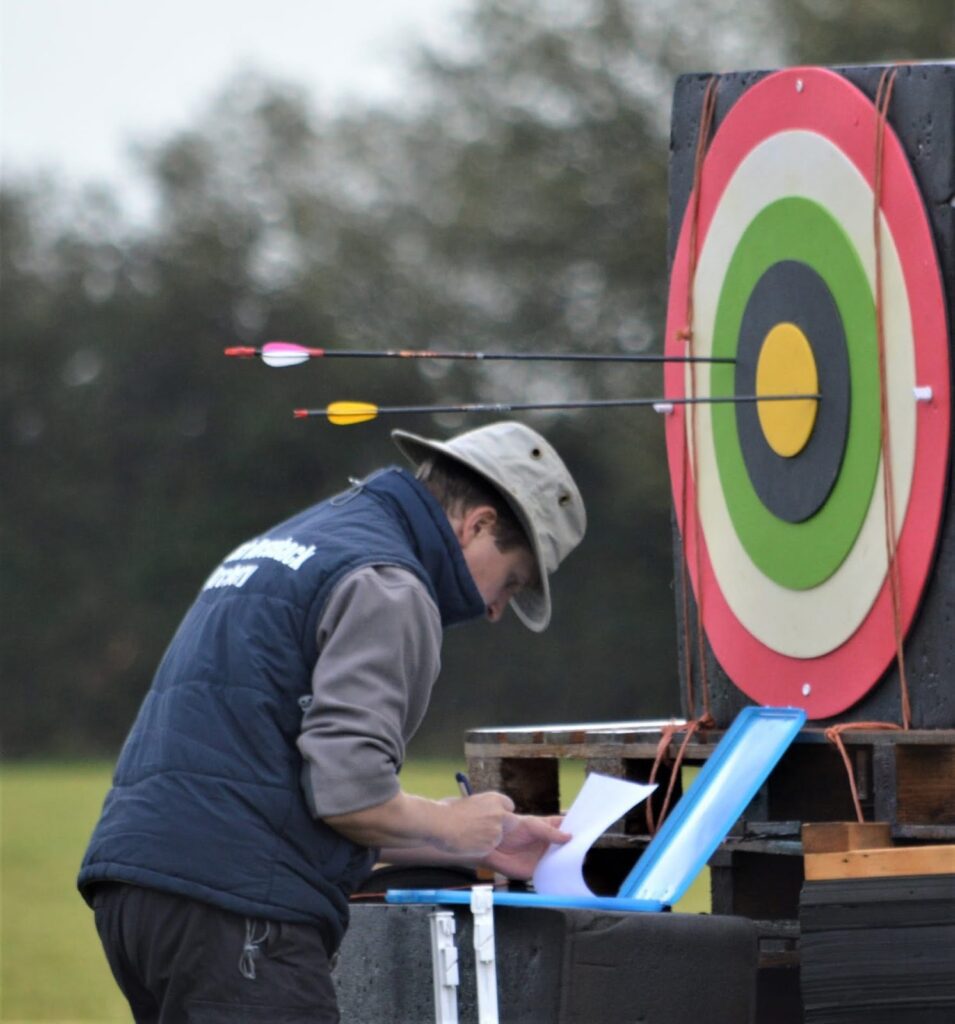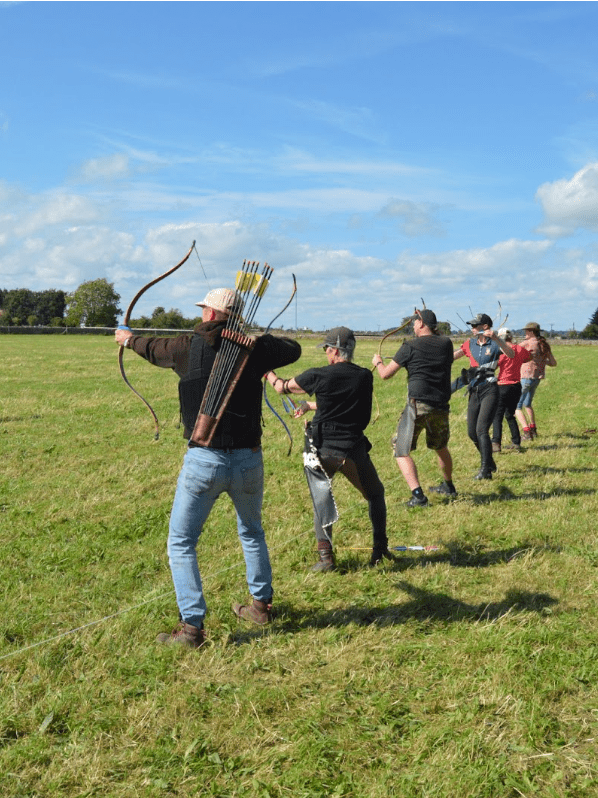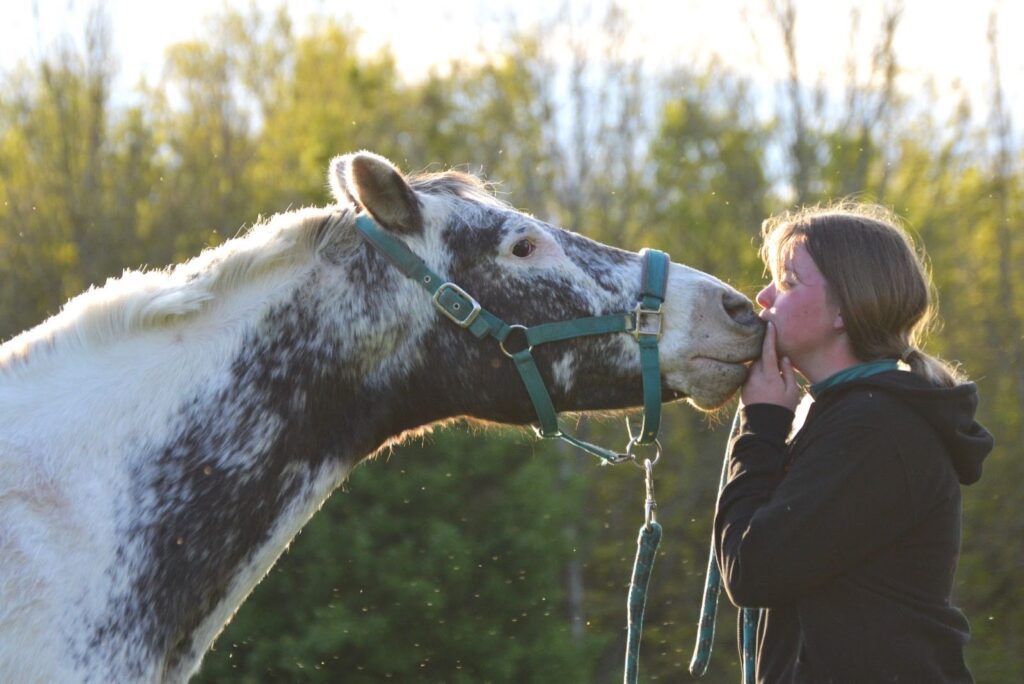
We’ve put together the following checklist to help clubs and coaches who want to run a horseback archery competition. If you have any questions or need more advice, please contact britishhorsebackarchery@gmail.com or cotteswoldma@gmail.com and we’ll be happy to help.
Step 1 – Find a venue
Venue criteria:
- Must have a written risk assessment specific to that venue – a template can be found here
- Must have a gate that can be shut – in case of rider fall
- If a muti-event show then need to know what the neighbours will be (otherwise can end up backing onto a coconut shy…) – some things aren’t possible to appreciate on a risk assessment prior visit to an empty field
- Secured space for horses to pen:
- Access to water
- Penning on suitable grounding (ie no fertilised fields)
- For a multi day event – space for camping:
- Portaloos or access to toilets
- Consider scheduling an evening activity to help competitors to get to know each other


Step 2 – Choose your events
Decide on your event level, more on that on the IHAA website here.
There is a course database on the IHAA website here.
If you want your competition to have IHAA accreditation or Records and Ranking status then you need to apply using this form.
Who can take part in which track (if using BHAA insurance)?
- Club: Raid, T60, Aussie, Club Hunt, simple arena tracks [i.e. short distance front, back, side shots]
- Intermediate: Club tracks + T90 & T110, Mamluk, Skirmish, Intermediate Hunt, all arena tracks
- Advanced: Intermediate tracks + Hunt tracks (need jumping module for Hunt tracks with jumps)
Step 3 – Come up with a budget
Budgets should include the following:
- Venue hire
- Portaloos
- First aid costs
- Prizes
- Equipment expenses (targets, target faces, music licence if playing music)
- Click here for equipment recommendations
Step 4 – Get event insurance
When it comes to insurance please check out the BHAA’s insurance page for the latest information. In general:
- A competition with existing Club members can be covered under a coach’s standard public liability policy
- Note that “existing Club members” means those who attend regular Club training sessions i.e. someone cannot become a Club member just to enter a competition
- A competition with competitors invited from outside of the Club requires events insurance
To make use of the BHAA’s events insurance you just need to complete the form on the website. As of the publication of this guide, the cost is £112/event, however, if all of your competitors are BHAA members at the time of the event then the BHAA will cover this cost as we want to encourage more competitions.
Step 5 – Put together an entry form
Important things to include on entry forms:
- Competitor name as registered on IHAA
- Year of birth if Junior & YR
- Emergency Contact details
- Pre existing medical history that could impact on riding and shooting
- Horses details & vaccine rules
- Link to IHAA Code of Equine Welfare
- Disclaimers – including photo permission
- Cost, entry deadlines, whether entry on day is available at small shows
An entry form template is available here


Step 6 – Ensure you have a sufficient number of helpers
People can access online training of ground crew roles through the IHAA website. There is a free to view summary of all roles, and a separate one on using ihaa.eu here
The main roles we recommend to be covered are:
- Head judge
- Timekeeper
- Scorer
- Target judges (varies on which tracks are running)
- Start and finish line judges
- Arrow collectors
Other roles that can be covered are:
- Announcer (which group should be getting ready etc)
- Second/Third judge to help split workload if a 2* competition
- Collecting ring marshal if an extended competition area (esp if any mounted shooting there must be a range officer)
Judging Team:
- The Head Judge must ensure that all Ground Crew understand their roles
- Head judge is responsible for recording accidents and near misses:
- Judge can delegate the role but is still responsible for making sure it is completed
- Judging: system in place to allow judges to update each other/briefing at start of every group to allow for changes – there is a document where all judging decisions and appeals must be logged, this allows for continuity despite judging changes and back up if complaints are made about judging decisions later on
- There are judging sheets that should be used to advise or reinforce decisions, these can be handed out at the end of the group once the rider has finished
- IHAA linked paperwork
- After an R&R competition the judge must return their form to the IHAA (which will be emailed to them), or the competition will not be included in world ranking
Step 7 – Send out joining instructions in advance of event:
To include:
- Link to IHAA Code of Equine Welfare
- Details of the venue: address, what3words, re access for large lorries, any nav instructions
- Map of showground/venue. Google-earth image annotated with eg camping, competition track, parking, toilets, warm-up area
- Info re amenities eg showers, electric
- Info linked to bringing horses – whether hay can be purchased on site, about penning horses
- Distance to nearest shop if a multi-day event
Step 8 – Get first aid cover
- Designated first aider required:
- Must have a first aid certificate
- In the event of a Club level or 1* competition a first aider is required
- For other competitions, such as 2*, it is up to the organiser to review based on their risk assessment: the number of competitors, horses, choice of tracks and the venue itself
- If a rider visits the ambulance then they must inform the Head Judge (or Assistant Judge) and confirm that they have been signed off to continue, just needs to note this in the judging master sheet
Equine Health:
- Competitions such as Nationals need a Veterinary professional in attendance
- Other events it is up to the organiser to review based on their risk assessment: the number of competitors, horses, choice of tracks and the venue itself
- Club Level or 1* events need to have contact details for local Vet


Step 9 – Hold briefings before the event begins:
- Safety briefings are required to ensure everybody understands what is about to take place
- Competitors briefings are useful so up to date information can be given (group timings/track changes etc):
- Communications board – groups/start times/tracks/who is
- Volunteer briefings are helpful to allocate roles which helps make the competition run smoother if everyone knows what they are doing
- Before the competition starts all competitors must sign to say they will follow the Equine welfare code and appreciate penalties will be imposed if it is broken (prepared form available). There must be a printed out copy of the code available for people to refer to if they wish.
- The appeals system (personnel and charges) must be explained (the prepared sheet with this info must then be available for reference at the judges tent)
Step 10 – Consider other requirements:
Competitions Complaints Procedure:
Any complaints made should be communicated to the Head Judge (or Assistant Judge) in a respectful manner and both the complaint and the decision should be documented on the judging master sheet.
In the event of equine welfare concerns, a safe space should be provided to ensure people can report them.
Appeals must be made in writing and accompanied by the fee (if applicable). Appeals and their outcome must also be recorded.
Competition Welfare:
- Horses must not be allowed to bolt onto the track
- Riders may not be led into the start of the track when competing in canter.
- A safe space must be provided for anyone who wishes to raise a horse welfare concern

Useful Contacts and Links:
- Katie Phillips – Events Director – kmphillips75@gmail.com
- Becca Sweetman – Chair/Insurance – becca@bhaa.org.uk
- Emily Massey – Qualification/IHAA rep – ejmhorsebackarchery@gmail.com
- Cathy Dwyer – Welfare – dwyer.cathy@gmail.com
- britishhorsebackarchery@gmail.com – FAO
- Helen Barnes – Competitions Liaison – cotteswoldma@gmail.com
Rosettes:
Contact the BHAA as we sometimes have a small set that can be purchased directly from us for a small fee. Otherwise, they can be purchased from vendors like this.
